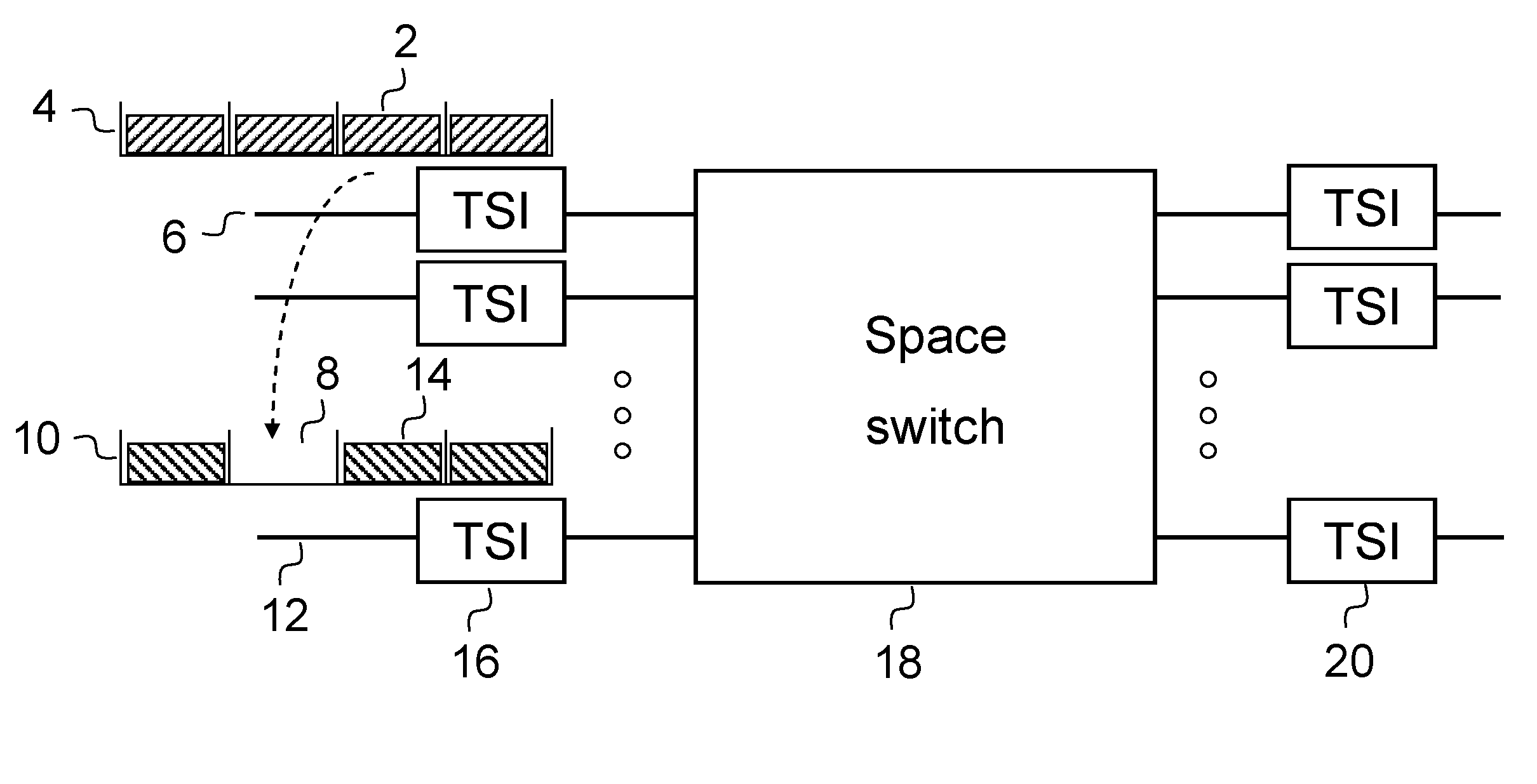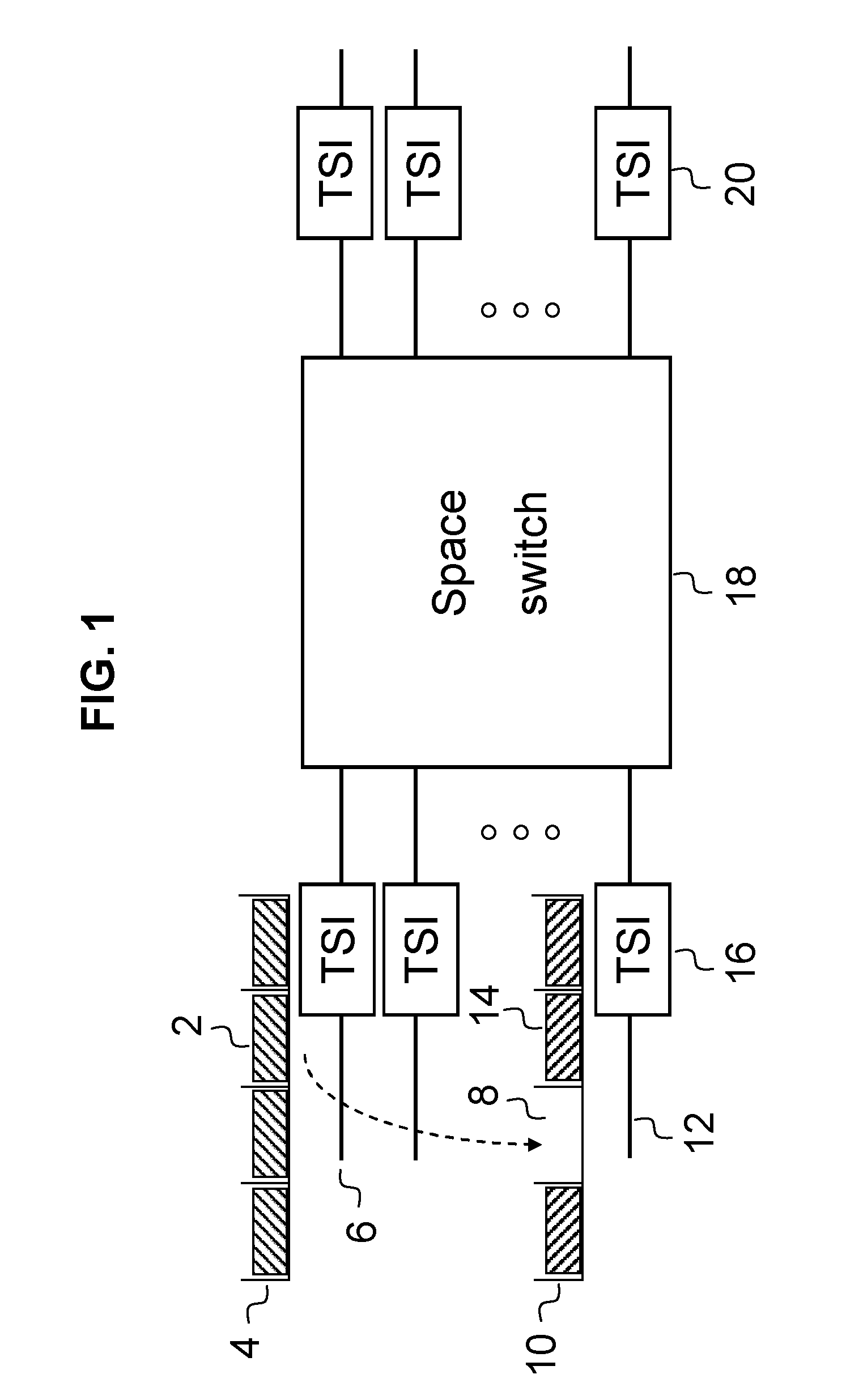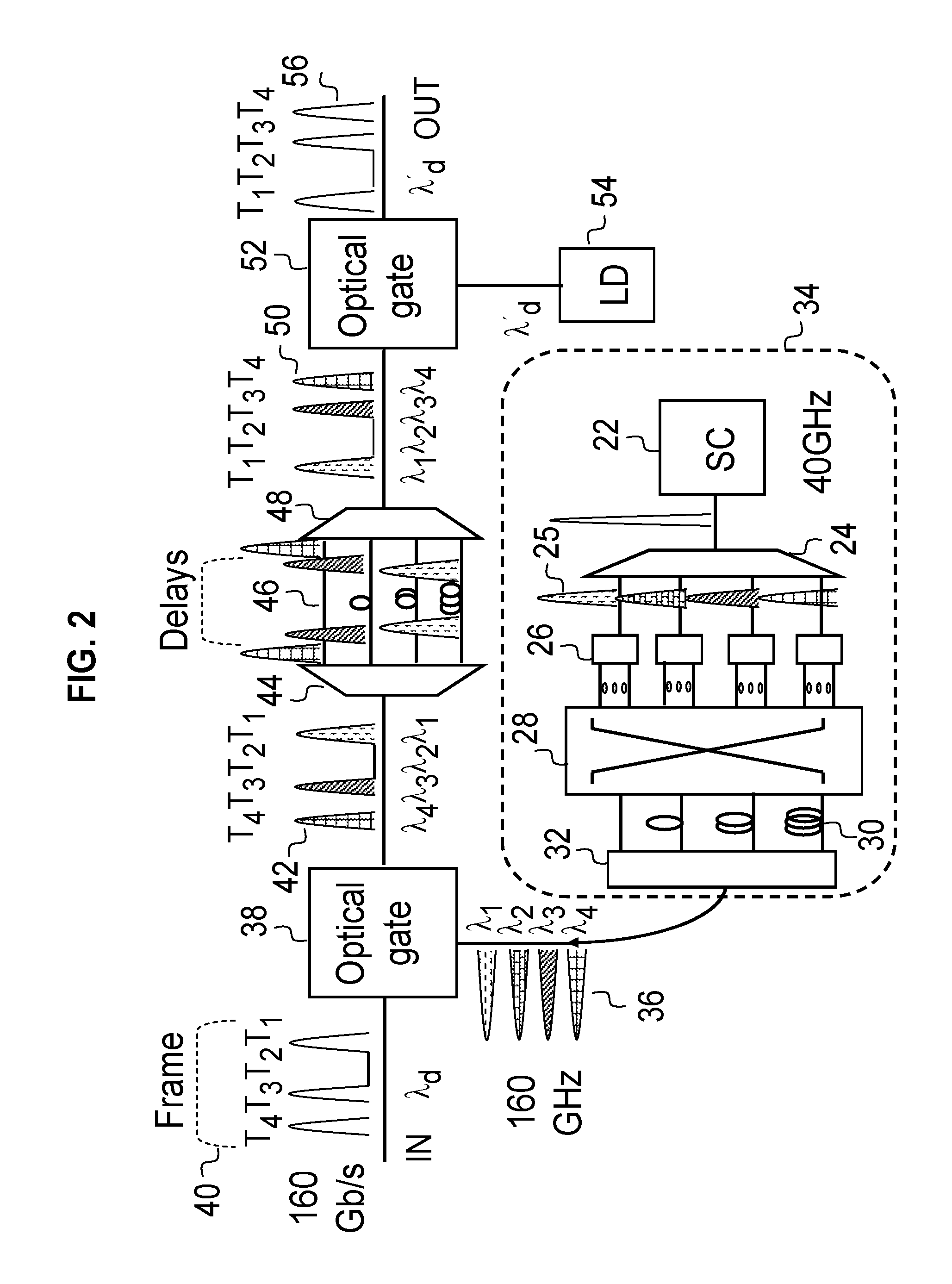Time multiplexed space switch
- Summary
- Abstract
- Description
- Claims
- Application Information
AI Technical Summary
Benefits of technology
Problems solved by technology
Method used
Image
Examples
Embodiment Construction
[0020]In FIG. 2, a laser source 22 of ultra-short pulse radiation (SC) produces a sequence of pulses of rate equal to the data tributary rate (say, 40 GHz), and is spectrally sliced, using a wavelength de-multiplexer 24, to produce a number of synchronous pulse sequences 25 (in this case, four) each at different wavelength. Subsequently, each pulse is split into a number of pulses of same wavelength using a power splitter 26. A space switch 28 selects a number of thus produced pulses and blocks and discards the pulses which are not needed. Each of the selected pulses is connected by the switch to a delay line 30 of appropriate time delay. In this example the four delay paths differ in delay by one bit period of the higher rate TDM data channel (160 Gb / s). A coupler 32 combines the delayed pulses. In this way, a multi-wavelength pulse sequence 36 is created of 160 GHz rate (4 times 40 GHz), which can be altered by re-configuring the space switch 28. Therefore, the system 34 is a puls...
PUM
 Login to View More
Login to View More Abstract
Description
Claims
Application Information
 Login to View More
Login to View More - R&D
- Intellectual Property
- Life Sciences
- Materials
- Tech Scout
- Unparalleled Data Quality
- Higher Quality Content
- 60% Fewer Hallucinations
Browse by: Latest US Patents, China's latest patents, Technical Efficacy Thesaurus, Application Domain, Technology Topic, Popular Technical Reports.
© 2025 PatSnap. All rights reserved.Legal|Privacy policy|Modern Slavery Act Transparency Statement|Sitemap|About US| Contact US: help@patsnap.com



